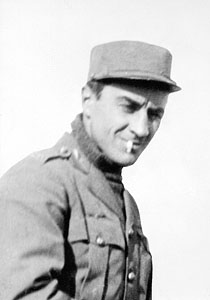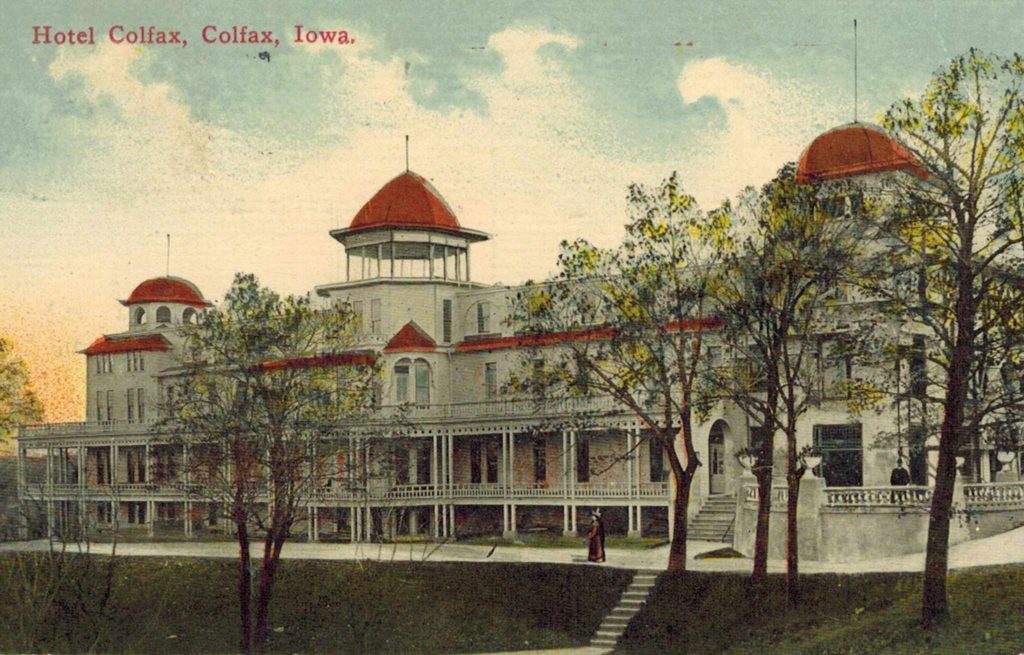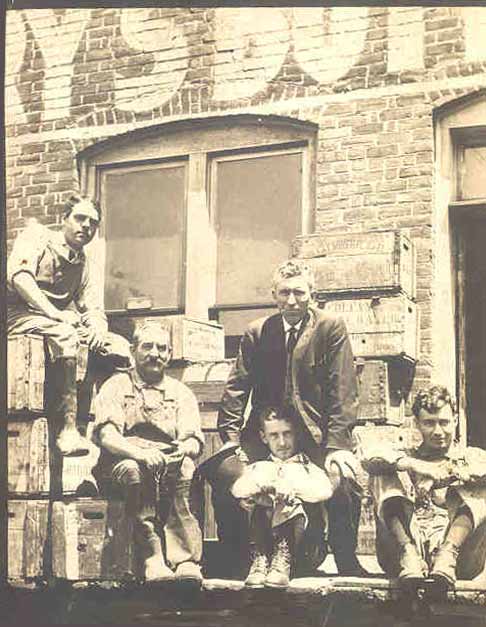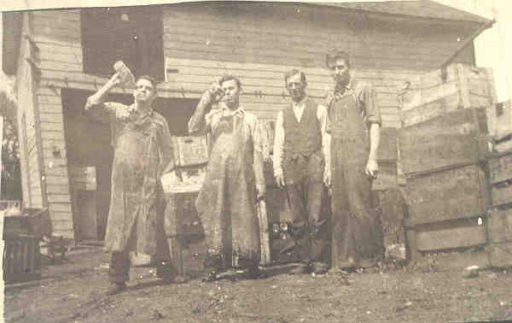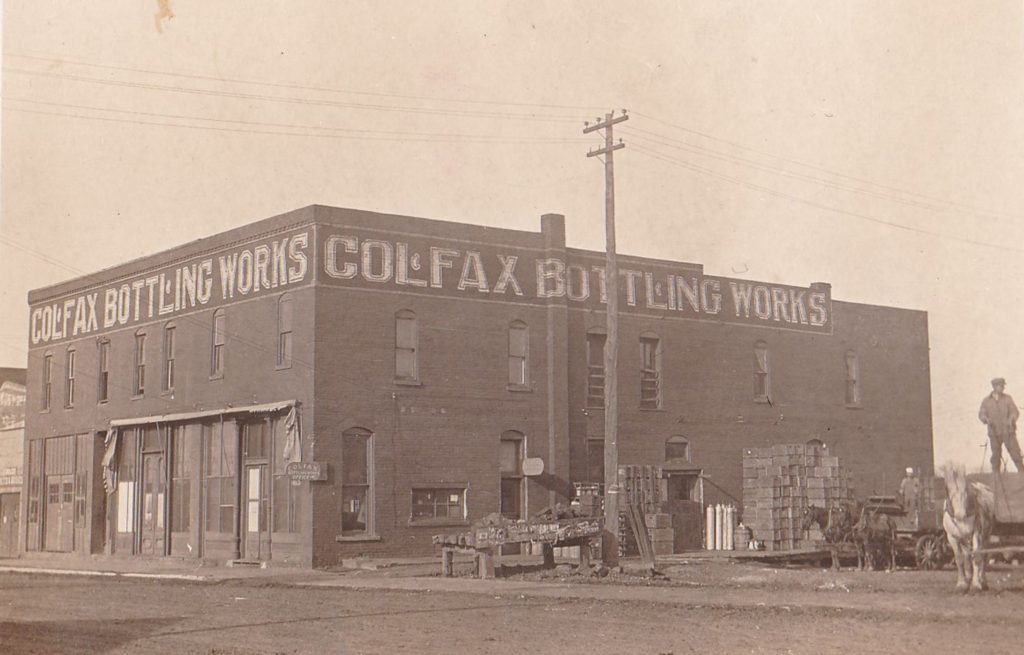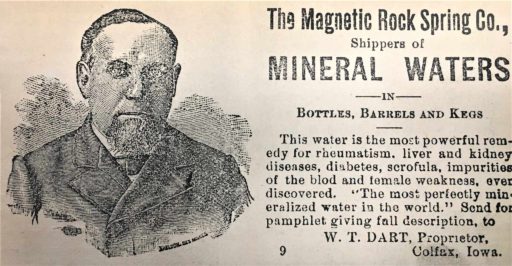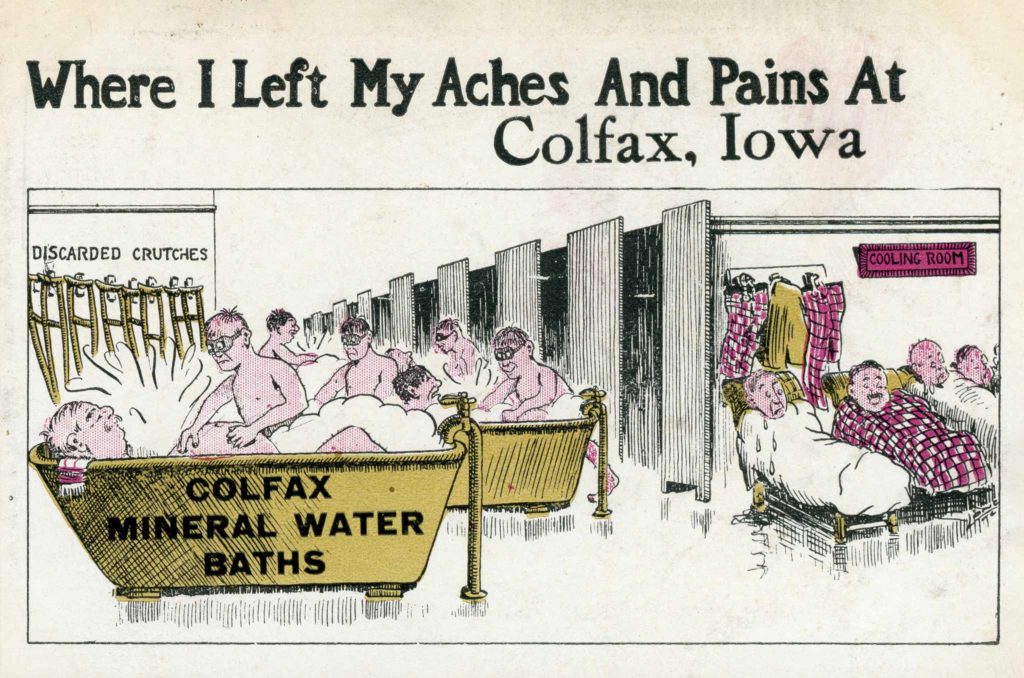About
Colfax, Iowa – The Spring City
The City of Colfax is located in Central Iowa just 25 minutes east of Des Moines off Interstate 80. Our rolling hills, history, historic architecture and opportunities for year round outdoor recreation attract thousands of visitors a year. The city is a safe, healthy and vibrant place to raise a family, start a business, or enjoy retirement.
The History of Colfax
Mineral Water
Nestled along the bluffs of the Skunk River of Central Iowa, the small town of Colfax boasts a big and surprising history. Originally platted in 1866 as a stagecoach and railroad stop, Colfax rocketed to world prominence with the discovery of artesian mineral water springs in 1875. News of the mineral water attracted several doctors, pharmacists, hoteliers, and other enterprising business people to move to the community to capitalize on the ‘life giving properties’ of mineral water. The mineral water industry soon brought in thousands of visitors a year for about a forty year period, who came to bathe and drink the medical properties of the water and enjoy the clear air of a rural setting.
In its heyday, Colfax became known as “Spring City,” “Little Carlsbad of the Midwest,” and the “Saratoga of the West” comparing the town to famous spa resorts of Europe and America. Colfax sported eighteen mineral springs, four bottling works, nine spa hotels, and other industries that sprang up around the burgeoning economy of the time. In 1900, Hotel Colfax, the largest hotel, registered 13,000 guests. In 1904, Hotel Colfax went through a $600,000 ($17M in today’s money) Spanish Mission style renovation making it one of the premier hotels in the nation. Hotel Colfax was so large that it had its own train station, trolley, power plant, and six-hole golf course. Colfax’s bottling works bottled plain, carbonated, and flavored water (with unique flavors such as ‘iron and celery’ and ‘sarsaparilla’) and shipped the water across the country to be sold as health tonics in pharmacies and hospitals. The mineral water tourism industry created the need for public entertainment and a 2,000-seat outdoor auditorium, dining hall, and camping grounds were built to host The Chautauqua and Methodist Epworth League traveling entertainment circuits. Performers, singers, lecturers, orchestras, and religious speakers came from around the world to entertain and educate Colfax citizens and guests during the summer months.
Unfortunately, World War I, The Great Depression, and modern medicine brought about the end of the mineral water industry for Colfax. Many of the great hotels fell into disrepair or were destroyed by fire. In 1933, the iconic gazebo at Mineral Springs Park was constructed by local volunteers and unskilled labor from the Reconstruction Finance Corporation (RFC) to commemorate the once illustrious industry. Now, Colfax has memorialized its unique past by creating the Spring City Commercial Historic District, which is listed on the National Register of Historic Places, and local volunteers are always looking for ways to preserve and celebrate Colfax’s past.
Coal Mining
Coal was discovered in the area along the Skunk River bluffs in 1864 before Colfax was a town. During the town’s early history, several coal mines opened in the vicinity and Colfax became the shipping hub with the arrival of the railroad. Railroad spurs from Colfax led to the now non-extant mining communities of Seevers and Oswalt which were a few miles away from Colfax. The coal mining industry attracted settlers and immigrants from other parts of the US, England, Wales, Central and Eastern Europe, and several Black American coal mining families. Coal mining was the backbone of Colfax’s economy during the winter months when the mineral water tourism industry was slow. Coal mining declined in the early 20th century as coal resources in the area dwindled.
James Norman Hall
Colfax is the boyhood home of author James Norman Hall. Born in 1887, Hall is the co-author of the famous book Mutiny on the Bounty (1932), which is based off the mutiny against British Naval Lieutenant William Bligh in the South Pacific. The novel has been made into film three times. After his childhood in Colfax and college years in Grinnell, Iowa, Hall had a lively and adventurous life serving in the British, French, and American armed forces during WWI—adventures which he frequently wrote about. He later settled on the island of Tahiti, where he wrote most of his work. Hall wrote a series of poems entitled Oh, Millersville! under the pseudonym Fern Gravel, who is young girl growing up in Millersville and the main character of the poems. The poems are a loving reflection of small town Iowa life and growing up in Colfax.
